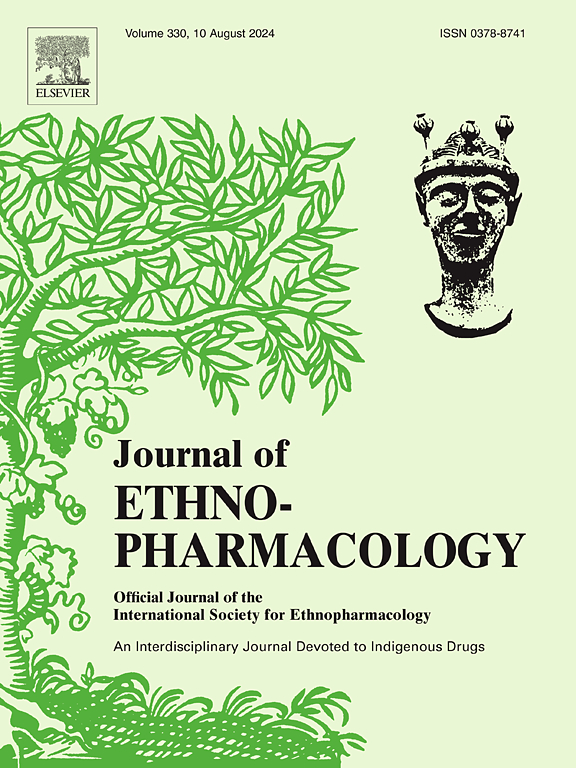Desmodium caudatum (Thunb.) DC. extract attenuates hyperuricemia-induced renal fibrosis via modulating TGF-β1 pathway and uric acid transporters: Evidence from in vitro and in vivo studies
IF 4.8
2区 医学
Q1 CHEMISTRY, MEDICINAL
引用次数: 0
Abstract
Ethnopharmacological relevance
Desmodium caudatum (Thunb.) DC., a traditional Chinese medicinal herb, has been used to treat conditions such as rheumatic back pain, diarrhea, jaundice-related hepatitis, and abscesses; it also serves as an anthelmintic. The extract of Desmodium caudatum (Thunb.) DC. (DCE) is also known for its antioxidant and anti-inflammatory properties. However, its impact on kidney fibrosis remains unclear.
Aim of the study
This study investigated whether DCE can alleviate hyperuricemia-induced kidney fibrosis by modulating the transforming growth factor-β1 (TGF-β1) pathway, activating epithelial-mesenchymal transition (EMT), and regulating uric acid transporters.
Materials and methods
NRK52E cells were exposed to uric acid (UA) followed by DCE and isovitexin (IV) for 24 h. Cell damage was assessed using an Oxidative Stress Kit, ELISA, Gelatin Zymography, and Western blotting. In parallel, adenine-induced C57BL/6 mice received DCE and IV treatment for 11 weeks. After sacrifice, renal injury was assessed through histopathological examination and protein expression analysis of fibrosis markers, EMT indicators, and uric acid transporters.
Results
DCE reduced reactive oxygen species (ROS) accumulation in uric acid-induced NRK52E cells and inhibited EMT by suppressing TGF-β1 and Slug while restoring E-cadherin expression. DCE treatment reduced fibrosis-related proteins (CTGF, collagen I, fibronectin, and α-SMA) in UA-treated cells and modulated uric acid transporters by increasing ABCG2 and OAT3 while decreasing URAT1 and GLUT9. In adenine-induced hyperuricemic C57BL/6 mice, DCE administration reduced serum uric acid levels and xanthine oxidase activity. Histological analysis showed that DCE attenuated renal fibrosis through decreased glomerular atrophy, reduced collagen deposition, and diminished α-SMA and fibronectin expression.
Conclusion
Our study demonstrates that DCE exerts protective benefits against hyperuricemia-induced renal fibrosis. The potential mechanism may involve suppressing the TGF-β1 signaling pathway and regulating the uric acid transporter, thereby mitigating kidney injury.

求助全文
约1分钟内获得全文
求助全文
来源期刊

Journal of ethnopharmacology
医学-全科医学与补充医学
CiteScore
10.30
自引率
5.60%
发文量
967
审稿时长
77 days
期刊介绍:
The Journal of Ethnopharmacology is dedicated to the exchange of information and understandings about people''s use of plants, fungi, animals, microorganisms and minerals and their biological and pharmacological effects based on the principles established through international conventions. Early people confronted with illness and disease, discovered a wealth of useful therapeutic agents in the plant and animal kingdoms. The empirical knowledge of these medicinal substances and their toxic potential was passed on by oral tradition and sometimes recorded in herbals and other texts on materia medica. Many valuable drugs of today (e.g., atropine, ephedrine, tubocurarine, digoxin, reserpine) came into use through the study of indigenous remedies. Chemists continue to use plant-derived drugs (e.g., morphine, taxol, physostigmine, quinidine, emetine) as prototypes in their attempts to develop more effective and less toxic medicinals.
 求助内容:
求助内容: 应助结果提醒方式:
应助结果提醒方式:


